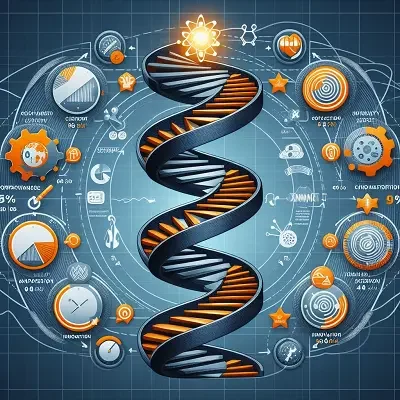1. Introduction
Continuous Improvement, a fundamental concept in the world of management and operations, has transcended its origins to become a foundation for organizational excellence. In this short article, we explore the principles, methodologies, historical evolution, application across industries, impact on organizational excellence, challenges, and future trends.
2. Defining Continuous Improvement

Continuous improvement is a systematic and ongoing process aimed at enhancing organizational performance by identifying, analyzing, and incrementally refining various aspects of processes, products, and services.
Rooted in the philosophy of perpetual advancement, continuous improvement involves a commitment to eliminating inefficiencies, reducing defects, and minimizing waste. It’s not a one-time initiative but a cultural mindset that permeates every level of an organization, fostering adaptability, innovation, and resilience.
3. Historical Evolution
The roots of Continuous Improvement can be traced back to early 20th-century thinkers like Frederick Taylor and Walter Shewhart, who laid the groundwork for systematic quality improvement. However, it was post-World War II, with the advent of Total Quality Management (TQM) and the teachings of quality gurus like W. Edwards Deming and Joseph Juran, that the concept gained significant traction.
The incorporation of the Japanese Kaizen approach into the continuous improvement philosophy marked a transformative moment in the evolution of organizational excellence. Kai-zen (change-good, or “change for the better” in Japanese) introduced a mindset of continuous incremental improvements at all levels of an organization. Deming and Juran recognized the power of Kaizen in fostering a culture of continuous improvement, empowering employees to identify and address inefficiencies on a daily basis. This amalgamation resulted in a more dynamic and responsive approach to quality enhancement, emphasizing the importance of small, ongoing improvements over time.
Continuous Improvement evolved from a quality-centric focus to a more holistic approach that considers every aspect of organizational operations. It moved beyond the manufacturing sector, where it initially took root, to permeate various industries and sectors, from healthcare to information technology.
4. Key Principles of Continuous Improvement
- Kaizen Philosophy: The Japanese concept of Kaizen epitomizes the spirit of continuous improvement. It emphasizes small, incremental changes made by everyone in the organization.
- PDCA Cycle: The Plan-Do-Check-Act (PDCA) cycle, introduced by Shewhart and popularized by Deming, provides a structured framework for continuous improvement. It involves planning, executing, evaluating results, and acting upon lessons learned.
- Employee Involvement: Continuous Improvement thrives on the active participation of employees at all levels. Empowering individuals to contribute their insights and ideas fosters a culture of innovation and problem-solving.
- Customer Focus: Aligning improvement efforts with customer needs is a central tenet of Continuous Improvement. Understanding and exceeding customer expectations drive ongoing enhancements.
- Data-Driven Decision-Making: Utilizing data and metrics to inform decisions is crucial. Continuous Improvement relies on accurate data analysis to identify trends, root causes, and areas for improvement.
5. Methodologies linking closely with Continuous Improvement
- Lean Thinking: Originating from Toyota’s Production System, Lean Thinking focuses on eliminating waste and optimizing efficiency. It emphasizes delivering maximum value to the customer with minimal resources.
- Six Sigma: Six Sigma, with its DMAIC (Define, Measure, Analyse, Improve, Control) methodology, concentrates on reducing process variation and eliminating defects. It brings a statistical and data-driven approach to Continuous Improvement.
- Agile Methodology: In the realm of software development and project management, the Agile methodology promotes iterative development, adaptability, and responsiveness to change, aligning with the principles of Continuous Improvement.
The integration of these methodologies into the Continuous Improvement framework provides organizations with a versatile toolkit to address diverse challenges and opportunities. Check this article for more information on Lean Six Sigma.
6. Application Across Industries
Continuous Improvement is not industry-specific; its principles find relevance across diverse sectors:
- Manufacturing: In manufacturing, Continuous Improvement optimizes production processes, reduces defects, and enhances overall efficiency.
- Healthcare: In healthcare, it improves patient care by streamlining processes, reducing wait times, and enhancing the overall quality of services.
- Service Industry: In the service industry, Continuous Improvement focuses on enhancing customer experiences, reducing response times, and optimizing service delivery.
- Information Technology: In IT, Agile methodologies are a manifestation of Continuous Improvement, allowing for adaptive and iterative development.
- Education: Even in education, Continuous Improvement principles are applied to enhance teaching methods, curriculum design, and overall learning experiences.
Organizations across sectors recognize that the pursuit of excellence is an ongoing journey, and Continuous Improvement provides the roadmap for that journey.
7. Impact on Organizational Excellence
The impact of Continuous Improvement on organizational excellence is multifaceted:
- Operational Efficiency: By identifying and eliminating inefficiencies, organizations streamline operations, reduce costs, and improve resource utilization.
- Quality Enhancement: Continuous Improvement leads to a reduction in defects and errors, resulting in higher-quality products and services.
- Employee Engagement: Involving employees in the improvement process fosters a sense of ownership, empowerment, and commitment to organizational goals.
- Innovation Cultivation: The constant pursuit of improvement encourages a culture of innovation, where employees are motivated to seek creative solutions to challenges.
- Adaptability and Resilience: Continuous Improvement equips organizations with the ability to adapt to change swiftly and respond effectively to evolving market conditions.
- Strategic Alignment: Continuous Improvement ensures that organizational objectives align with market demands, customer expectations, and strategic goals. It provides a mechanism to recalibrate strategies and tactics in real-time.
As organizations increasingly recognize the need for agility and responsiveness, the principles of Continuous Improvement become instrumental in achieving and sustaining excellence.
8. Challenges and Overcoming Resistance
Despite its benefits, implementing Continuous Improvement may encounter challenges, such as resistance to change, lack of resources, or a failure to sustain momentum. Addressing these challenges requires strategic planning, effective communication, and a commitment to the long-term vision of improvement.
Strategies for Overcoming Challenges
- Leadership Commitment: Strong leadership commitment is essential to overcoming resistance. Leaders must champion the cause of Continuous Improvement, emphasizing its strategic importance and long-term benefits.
- Employee Training: Comprehensive training programs ensure that employees at all levels understand the principles and methodologies of Continuous Improvement. This empowers them to actively contribute to the improvement process.
- Communication and Transparency: Transparent communication about the purpose, benefits, and expected outcomes of Continuous Improvement initiatives builds trust and alignment across the organization.
- Recognizing and Rewarding Contributions: Acknowledging and rewarding employees for their contributions to Continuous Improvement fosters a positive and collaborative culture. It reinforces the value of proactive problem-solving and innovation.
- Continuous Monitoring and Adjustment: Regularly monitoring the progress of Continuous Improvement initiatives allows organizations to identify bottlenecks and make necessary adjustments. Flexibility in approach is crucial to overcoming unforeseen challenges.
By recognizing potential challenges and proactively implementing strategies to address them, organizations can navigate the path of Continuous Improvement more effectively.

9. Future Trends and Technologies
The future of Continuous Improvement is intertwined with emerging technologies such as Artificial Intelligence, Machine Learning, and Industry 4.0. These technologies offer opportunities for more advanced data analysis, predictive maintenance, and real-time monitoring, enhancing the precision and effectiveness of improvement initiatives.
Artificial Intelligence (AI) and Continuous Improvement
AI can analyse vast datasets to identify patterns, predict potential issues, and recommend optimal solutions. Integrating AI into Continuous Improvement processes enhances decision-making and accelerates problem-solving.
Industry 4.0 and Smart Manufacturing
The fourth industrial revolution, Industry 4.0, brings a paradigm shift in manufacturing through the integration of IoT devices, sensors, and advanced analytics. Smart manufacturing enables real-time monitoring, predictive maintenance, and data-driven decision-making, aligning seamlessly with Continuous Improvement goals.
Blockchain Technology and Supply Chain Optimization
Blockchain technology ensures transparency and traceability in supply chains. By leveraging blockchain, organizations can enhance the visibility of their supply chain processes, identify inefficiencies, and implement continuous improvement strategies.
Augmented Reality (AR) and Training
AR technologies facilitate immersive training experiences. Organizations can use AR to train employees on Continuous Improvement methodologies, creating a dynamic and interactive learning environment.
10. Acknowledging the Evolution
The journey of Continuous Improvement reflects not only the evolution of management philosophies but also the adaptability of organizations in the face of changing times. From its early roots in quality management to its current prominence as a holistic approach to excellence, Continuous Improvement has proven its resilience.
A Cultural Shift
Perhaps most importantly, Continuous Improvement represents a cultural shift within organizations. It is not merely a set of tools and methodologies but a mindset that embraces change, values innovation, and encourages every member of the organization to contribute to the journey of improvement.
11. Conclusion
Continuous Improvement, rooted in a philosophy of perpetual advancement, has become an indispensable aspect of organizational excellence. Its principles, methodologies, and adaptability have allowed it to endure and evolve across generations and industries. As organizations navigate an ever-changing landscape, the commitment to continuous improvement remains a guiding force for those aspiring to not only meet but exceed the expectations of today’s dynamic and discerning stakeholders.
Do not hesitate to get in touch with Delft Consulting for more information or training on Continuous Improvement, or to investigate how to implement this methodology in your organisation to improve efficiency and foster a culture of continuous improvement in your operations.


